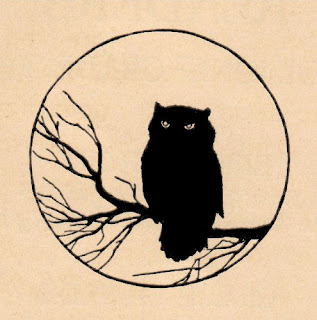Welcome to our forum. A Message To Our New and Prospective Members . Check out our Forum Rules. Lets keep this forum an enjoyable place to visit.
Currently working on errors from the latest (SimplePress) forum update. Many issues have been resoled and others are being worked on. Thank you for your patience.
 Topic RSS
Topic RSS



 (15 votes)
(15 votes) Regulars
 Offline
Offline








It's taken me a little bit to get this understood, because I'm more a 'melody' person - even though I love harmonized music.
So, gathered these videos together - I hope will help other new Fiddlers, too.
If you want to accompany or backup a singer or another Fiddler, you don't want to be playing the same thing they are!
You do need to figure out what key to play in, so you can at least come up with a few quick chords and chord progressions.
♥ This is where the CIRCLE OF FIFTHS can help!
Here's a GREAT video - simple & straight forward - important to memorize some of this.
"How To" The Circle Of Fifths Explained - Creative Violin
♥ For more advanced.
Circle of Fifths Progression - in all 7 modes! - Andrey Stolyarov
Circle of Fifths Exercise - FiddleJaminstitute
♥ Chord Basics.
Fiddle Chord Basics - FiddleJaminstitute
♥ Now, find simple chords to play on the Fiddle (short videos).
Beginning Fiddle Backup, 1, 4, 5 chords - Bluegrass with Friends
Find the 1, 4, 5 chords QUICKLY on the fiddle - WireWood Station/Michelle Edwards
2 note chord shapes for the fiddle - Chris Haigh/The Fiddle Channel
♥ By EAR!
Ear Trick: Find chord types in 2 steps - FiddleJaminstitute
♥ Want to do more?
Fiddle Tips from Darol Anger: Playing Backup - ArtistWorks
Fiddle Backup Tips - Dave Hunt
♥ The Nashville Number System!
The Nashville Number System For Fiddle - Megan Lynch Chowning
♥ Now, get specific!
Key of A - Bluegrass Fiddle Theory Chords & Licks - Charlie Walden
All Kinds of Licks with Chris Haigh - The Fiddle Channel
These are all helpful in general, but there are backup tutorials for specific tunes on YouTube that you can search. 😊
Pretty soon we'll ALL be Jammin'!

Love to know if others have tips not mentioned in the above videos!
...I better git to memorizing.
- Emily
Regulars
 Offline
Offline








For members, like me, new to playing the violin, with little other musical instrument background, I think I should've mentioned more about chords, first. (lol)
Up until recently, I have only thought of 'intervals' as a 'half or whole step', between notes on the violin.
When it comes to chords, larger intervals are very important and have important features that can effect your choices for playing backup or improv.
These intervals have names, e.g., "Dominant 7th", "Major 3rd", "Perfect 5th", etc...
If you need help understanding the relationship of intervals and chords, there's a few short lessons at popgrammar.com, that I found can really help! Maybe start with this one:
Intervals Pertaining to Chords

I have no guitar background and started violin with very little understanding of why and how chords can be so effective - other than I was told to just "play these chords" in my limited piano lessons.
...still working on knowing all this better. 😊
- Emily
Regulars
 Offline
Offline








Regulars
 Offline
Offline








@Ripton - you might enjoy this!
I've found another CRITTER tune - something to Crow about!
FiddleHed has a wonderful Tutorial on Backup Chords for the "Blackest Crow"!
Blackest Crow - Tutorial, playing chord backup

- Emily
Regulars
 Offline
Offline






Regulars
 Offline
Offline








Regulars
 Offline
Offline








Anyone wanting to make an interesting/unique backing track?
You don't even need a musical instrument to try something like this! (JasonYangViolin)
Electric Violin and Beatbox: Moonlight Grenade
What do you do when you have to play backup for a different kind of 'Performing Artist'? (JasonYangViolin)
Mike Song & Jason Yang Perform at InvASIAN - "Frolicking Symphony"

...some really interesting stuff at Jason Yang's YouTube Channel!
- Emily
Regulars
 Offline
Offline






Regulars
 Offline
Offline








@ABitRusty -
Yes, the fiddle backing was really nice - very subtle!
LOVE the rest of the Album, too! The interplay between banjo, mandolin, fiddle, etc... different for each tune. HAD to play along with "Star of County Down" - very nice in Bm & having a 'C' string allows me to play lower, too. 😊

...everything's in a MINOR key - makes me soooo happy!
GREAT FIND for backup ideas - THANX!
- Emily
Regulars
 Offline
Offline






This is a bit more of that bluegrass type ballad backing i guess..probably nothing unexpected when you think of the genere but I think it shows how a riff I guess youd call it can be used to bridge vocals. i really wouldnt call it a fill. Thats Not from experience using fills but just from what Ive heard them called. also like the long sustained double stops. like i said nothing probably unexpected but a really good song to maybe hear them.
I think its as important to listen to the music you want to play as it is to watch a tutorial. That said, I Really like this as something to try.
Regulars
 Offline
Offline








Regulars
 Offline
Offline






ELCBK said
@ABitRusty -Great riff/motif - sounds very familiar.
...I like to think of the parts of Irish & Scottish tunes as 'riffs'.
- Emily
yes Irish music has repeating riffs/motiffs inside of tunes. the more you play the more you recognize that and also recognize similar runs within other tunes. weve talked about that in other topics..Without listening to alot of tunes its more difficult to recognize that though. Another reason to immerse in the style you want to become good at wouldnt you say? Havent you found that its easier to find the notes of a tune when youve been listening to someome else play it alot? I think backing could work the same way. Pick a song you like and want to play and listen alot when you cant practice...the car, working, whatever... then when you have the instrument...listen again but with a more techincal mind..like say listen and think..whats going on during this phrase. then try and mimic it. At first it may be just trying to find the key...then the notes..then the phrasing and such. but youll have the song/tune internalized and youll be hearing it easier in your head as you try and play it.
Regulars
 Offline
Offline








I have to quit hiding threads - took me foreeeever to find this.
Anyway, thought this "Fisher's Hornpipe EZ BackUp Tutorial" worth checking out (from FiddleJaminstitute) talks about the importance of memorizing the arpeggios of the chords... and let your bowing give them character!
@Ripton -
This EZ Backup tutorial is good for many tunes that only use a few chords, so might be helpful to you.
Fisher's Hornpipe Tutorial - Chris Haigh

- Emily
 Offline
Offline

@ELBCK - thank you for this topic - some absolutely great links! As I want to be able to play bluegrass (among other things) the need to be able to play 'back-up' and accompaniment (?) is imperative. First, I've always heard of the circle of 5ths, but that is the first time I have heard it explained clearly. Then, I have checked out some of the links for chording on the fiddle and they are really helpful (and - they lead to other great videos!)
Thanks again !
LinDee
Regulars
 Offline
Offline








Regulars
 Offline
Offline






One thing that helps me is to practice chords to a well known song. One I can play without music so I know where the melody is going. The best way to play chords is with a chordal instrument..well one better suited...first would be a piano keyboard.. 25 keys works fine. then a guitar or uke. A mandolin would probably be easier for us fiddlers because the notes fall the same and the frets help, and if never played a guitar it takes a bit to be able to chord simple fingering..much less barring.. so wouldnt suggest going that route.
BUT.. you can always put down the bow put the violin in guitar position and practice chording by using fingers to strum..NO PICK. just lightly with hand. Our session leader/group teacher even does this quiet a bit to help if there is a newer rhythm player so she can give some direction on some chords.
It really helps get your head around progressions and what usually works or what may not work so well by doing this. putting the bow down helps concentrate on just that without having to worry about bowing.
example
just getting initailly I, IV, V is a good start. almost all western folk or trad type stuff ..even pop or rock will sound normal playing around with those. Most of us have that sound deep in our mind from listening to rock or pop..blues..western radio music.. As you get more comfortable with that.. Throw in some 7th chords and some minor chords. The dimished. augmented and sus. even Maj7th minor7ths chords really can be left out and added down the road. you have to have that initial triad anyway so best keep simple to start.
if a bass is in a track..depending on what they play it can throw off what you choose so irish works really well to practice with. simple.. almost never has a bass. pick a fiddle only track so youre not fighting against a guitar or cello players interpretation of the chords... maybe download the midi from thesession and slow it down or ideally record yourself playing the melody then play your fiddle to it ..chording in guitar position. still have to intonate though.
just ideas..hopefully something to try for those interested.


 Log In
Log In Register
Register














